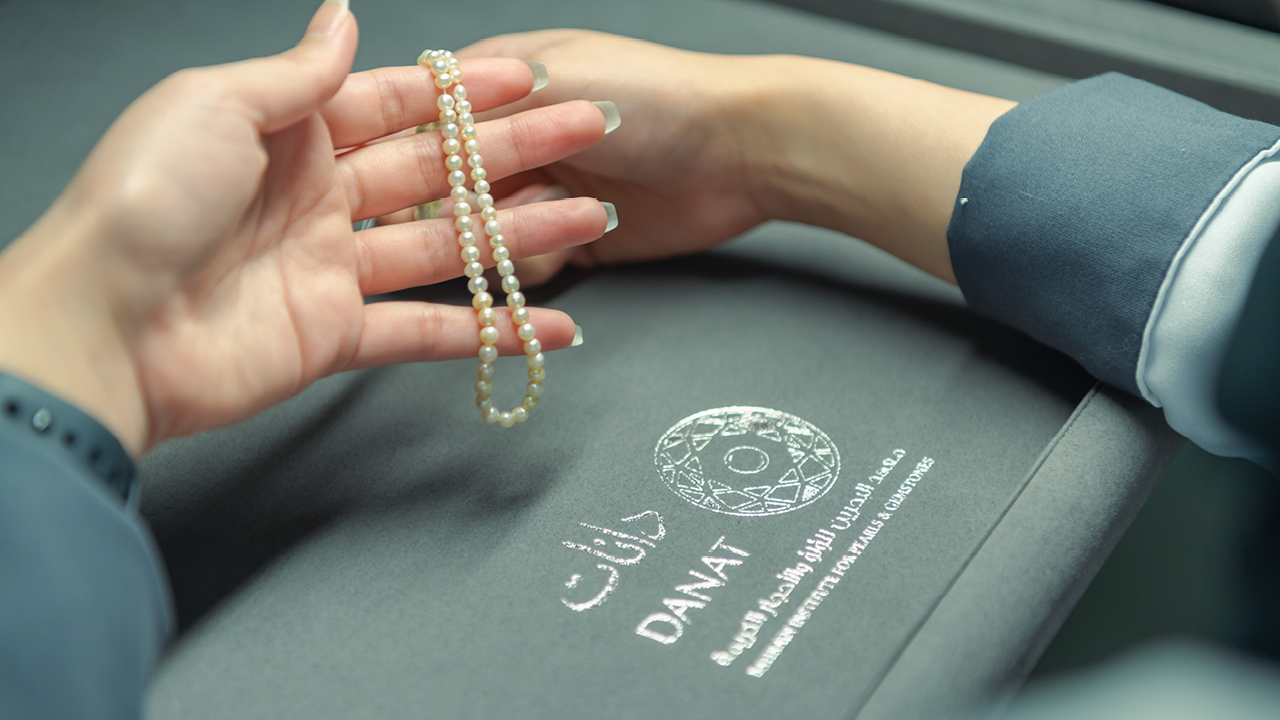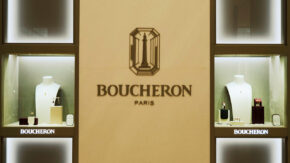While the diamond world uses the 4Cs — color, clarity, cut and carat weight — to determine a stone’s value, the desirability of natural pearls rests on a different set of factors: weight, surface condition, shape, color, and matching (for pearl pairs or graduated strands).
These five criteria form the basis of the natural nacreous pearl grading system at the Bahrain Institute for Pearls and Gemstones (DANAT).
Surface condition is comparable to diamond clarity. Just as diamonds with better clarity tend to be more valuable, natural pearls with better surface condition and fewer visible blemishes will get a higher grade than those with blemished surfaces.
The symmetry of a natural pearl’s shape is an important value factor as well. Pearls with symmetrical shapes such as round, button, drop or oval will always be more desirable than those with asymmetrical or organic shapes. The comparable factor in diamond grading is cut, which determines the way a diamond’s facets interact with light. A diamond with high-quality polish, symmetry and proportions will exhibit brilliance, fire and scintillation.
In the color category, nacreous natural pearls that are lighter in color, such as white or light cream, are more desirable and receive higher grades than other colors. For diamonds, color grading is more nuanced. Among colorless diamonds, the lighter or whiter a stone is, the higher its grade. However, with fancy-colored diamonds, more intense hues garner higher prices.
What DANAT has to offer
DANAT is a research-based gemological lab that offers a host of services to its clients. An industry leader in natural-pearl identification and grading, the institute issues three distinct report styles, each of which provides authentic, accurately described and verified information.
It offers identification and origin (species) determination reports for single pearls, pearls in lots, pearl tassels, and strands and necklaces. For diamonds, DANAT provides identification and grading services. For colored gems, it offers identification services, as well as geographic origin determination for emerald, ruby, sapphire and amber.
DANAT also offers training programs, workshops and diploma certifications in gemology to both industry professionals and pearl and gemstone enthusiasts. These courses are available on campus as well as online, in both English and Arabic. Additionally, the institute has collaborated with the Gemmological Association of Great Britain (Gem-A) to offer several Gem-A courses on its campus.
Recently, DANAT partnered with Rapaport by grading and certifying the pearls that went up for sale at Rapaport’s first natural-pearl auction.
One thing diamonds and pearls have in common is that weight — and hence size — is a main determiner of value. A larger pearl will always be more coveted than a small one, even if the other quality factors are of a lower grade.
Moreover, like diamonds, natural pearls witness an appreciable jump in price for larger sizes. For instance, there is a significant price difference between a 0.99-carat diamond and one weighing 1 carat or more.
Similarly, a natural pearl of 1.25 carats will be more expensive than a pearl under 1 carat. The tools and techniques for grading natural pearls differ in several ways from those used for diamonds. Like diamond graders, DANAT uses master sets as an objective basis for comparison.
Natural vs. cultured
Natural nacreous pearl grading differs from cultured-pearl grading in many ways. While both types get assessed for size, shape, surface condition and color, bead-nucleated cultured pearls are also graded on nacre thickness. This is not a requirement for natural pearls, since they consist entirely of nacre.
Cultured pearls are more symmetrical, and their color and tone can be largely controlled during the cultivation process. This makes it easy to categorize them into standardized groups. Consequently, highly structured cultured-pearl grading systems have developed over the years, among them the A to D and AAAA to A systems.
Since natural pearls form entirely without human intervention, they may have a combination of desirable and less desirable qualities. Because of these variations in quality factors, their assessment requires a more flexible grading structure. For instance, a natural pearl may have superior color but an asymmetrical shape. Or the pearl may be large but have an obvious cavity or crack. As a result, each natural pearl is graded differently.
Notably, size is an important value factor for both natural and cultured pearls, but the rarity of a given size differs. For instance, a 9-millimeter natural pearl is considered large and extremely rare. Among cultured pearls, however, it’s the 15- to 20-millimeter specimens that are considered large and rare.
But while diamond grading requires loupes or microscopes to detect internal features, it is possible to grade pearls with the naked eye — though magnification may be necessary in some cases to confirm certain surface features.
As far as gem identification is concerned, one can only distinguish a natural gem from a synthetic or cultured one using advanced instrumentation. While diamond-identification instrumentation relies on chemical analysis, pearls are identified using radiography technologies. Radiography enables gemologists to see growth structures that differentiate natural pearls from their cultured or imitation counterparts.
Main image: Natural pearl necklace. (Bahrain Institute for Pearls and Gemstones/DANAT)
This article is from the September-October 2023 issue of Rapaport Magazine. View other articles here.
Stay up to date by signing up for our diamond and jewelry industry news and analysis.



